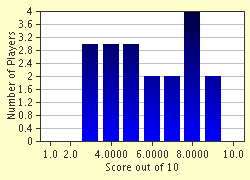Quiz Answer Key and Fun Facts
1. Elizabeth Gaskell was a prolific author of novels and short stories during the Victorian period. What was her full name prior to her marriage to William Gaskell in 1832?
2. After the death of her mother when she was just one year old, Elizabeth Gaskell was brought up by an aunt who lived in the town of Knutsford, Cheshire. What is the name of her novel that is set in a fictional version of that town?
3. Religion played an important part in Elizabeth Gaskell's life and both her father and her husband were ministers. To which Christian denomination that promotes the idea of God as a single entity did the family belong?
4. Which of Elizabeth Gaskell's novels was originally published anonymously?
5. Elizabeth Gaskell's father gave up his position as a minister on conscientious grounds in 1806 - in which of her novels did the heroine's father make the same choice, thereby impoverishing his family?
6. 'Mary Barton' and 'North and South' provide detailed insight into the lives of the poor, particularly those living and working in the rapidly industrialising cities of the North of England. How might these novels be described?
7. In 1857 Elizabeth Gaskell wrote a biography of which famous fellow female English novelist whose works include 'Shirley' and 'Villette'?
8. Elizabeth Gaskell contributed a short story named 'The Ghost in the Garden Room' to a Christmas collection "conducted by Charles Dickens" in 1859. What was the title of the overall work?
9. Which of Elizabeth Gaskell's novels was left unfinished at the time of her unexpected death following a heart-attack in 1865?
10. One of Elizabeth Gaskell's former homes has since been restored as a museum to show how the house would have looked when Gaskell lived there in Victorian times and also to provide community space for educational and literary events. Which one?
Source: Author
Fifiona81
This quiz was reviewed by FunTrivia editor
bloomsby before going online.
Any errors found in FunTrivia content are routinely corrected through our feedback system.


